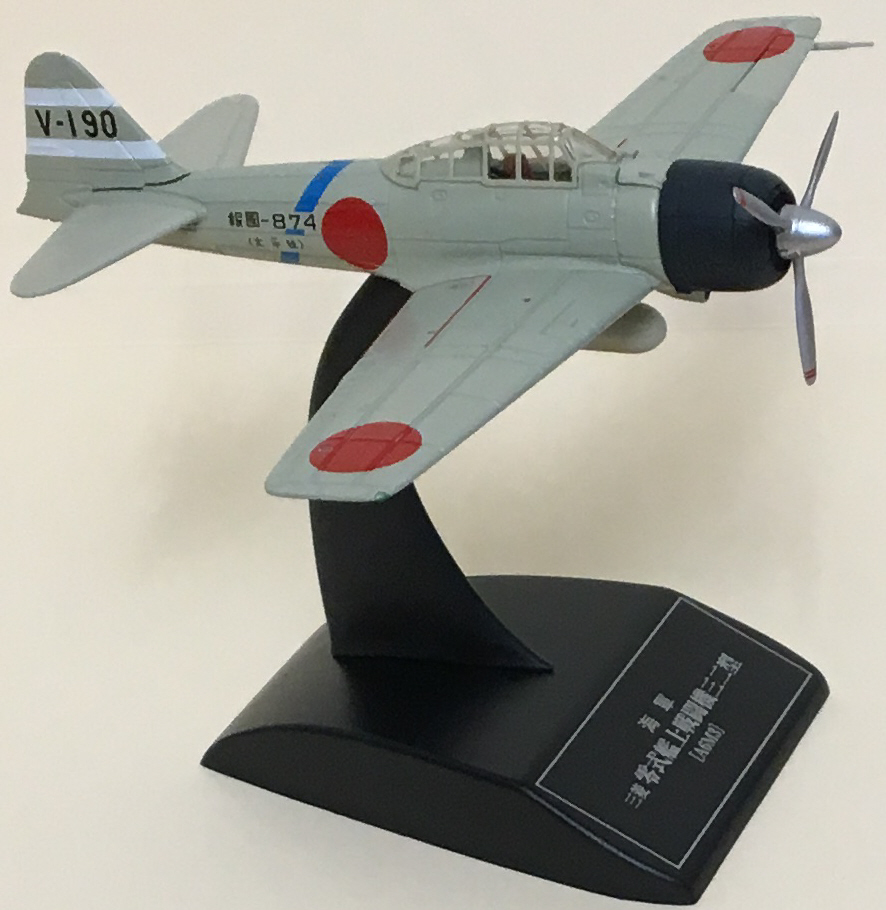FACTOIDS & TRIVIA
In 1942, the Imperial Japanese Navy asked Mitsubishi for an
improved version of the A6M2 "Zero" and introduced the A6M3 Model
32 "Zero" (allied code
name “Hamp”) in mid-1942. The Model 32 had a more powerful engine and
clipped wingtips so that folding wingtips would not be necessary when
assigned to aircraft carrier duty. This resulted in a shorter wingspan.
Unfortunately these changes only improved roll rate and dive speed. Top
speed was increased by a mere 4 mph. The drawbacks to the design change
included a range only one-third that of its predecessor and
decreased turning rate and climb rate. Only 343 were built until a
replacement could be produced.
The A6M3 Model 22
(why the newer model
was given a lower model number designation is a mystery) was
introduced in December 1942. It kept the short wingspan of the
Model 32, but with
rounded tips. Larger fuel tanks were fitted to increase its range.
Other minor refinements improved the turn rate, climb rate (3,100
ft/min)
and top speed (388 mph). A total of 560 Model 22 aircraft were built.
The
A6M3's main
adversary was, once again, the U.S. Navy's Grumman F4F-4
Wildcat. Here's a short
video
clip of me flying the A6M3 Type 32 against a Wildcat (note to self: don't fly with low blood sugar).
MITSUBISHI
A6M3 Model 32 Reisen "Hamp"

Class: Fighter
Crew: 1
Engine: Nakajima NK1F Sakae-21 14-cylinder twin-row radial (1,020 hp)
Max Speed: 350
mph at 17,000 ft
Climb Rate: 2,700
ft/min
Service Ceiling:
36,250 ft
Range: 620 miles
Armament: 2 x .303 inch machine
gun
(fuselage mount)
2 x
20 mm cannon (wing mount)
1 x 500 lb bomb
Model Scale:
1:87
Back
to the Japanese
Combat Aircraft of WWII
Menu

